Here is the Volume 2 of Judo from When you watch something, visit us first! Mr. Toshihiko YAMADA, Director and General Manager of the #Ryotokuji University Staff Judo Team told us about what Judo-ka aims for during Judo matches this time. This is the complete version of Part 4 & 5 on our YouTube channel.
In the Judo Vol.1, we learned what goes on in a Kumite Arasoi.
Mr. Toshihiko YAMADA, Director and General Manager of the Ryotokuji University Staff Judo Team, told us again what is going on during Judo matches.
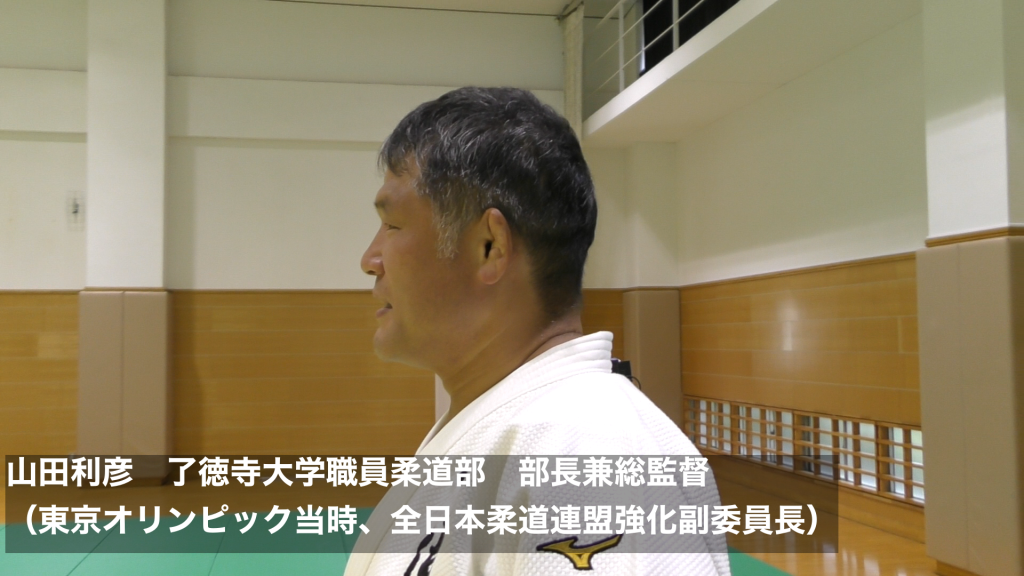
Part 4: What is the aim of Judo-ka?

In a Judo match, Judo-ka (athletes) ‘s first objective is to win by Ippon.
In Judo, Nage Waza (throwing techniques) are judged as either “Ippon” or “Waza-ari,”but to be judged as Ippon, the thrown opponent must be almost flat on his back, and in addition to a certain degree of speed and strength, the opponent’s back must reach the floor firmly.
Let’s see an example of Ippon.

If the throw is made with sufficient speed, strength, and the back to the floor like this manner, the referee will declare the throw as Ippon and the match is over. The current Waza (technique) was Ippon-seoi-nage, but the opponent will also counter it so that he cannot be easily thrown, and that is where the offense and defense occur.
As a result of such attack or defense, if one of the three elements is judged insufficient, applied Waza is considered as Waza-ari. Now, let’s see an example of Waza-ari.

If the throw was made in this manner, the opponent’s back was not sufficiently attached to the floor. Although the speed and strength of the throw were enough, such throw will be judged as Waza-ari.
As both are skilled Judo-ka who have been practicing Judo for long time, so they understand how the opponent’s moves which will be done before applying each Waza, therefore the key is how to block them.
On the other hand, the side applying Waza considers how to move the opponent’s center of gravity, and to do so, they put pressure on the opponent and use his/her reaction, as well as use the height difference, or even use the excellent speed at which he/she can apply Waza.
When White puts such pressure on Blue like this kind, and when Blue does not like this pressure and got up to return to his original position,
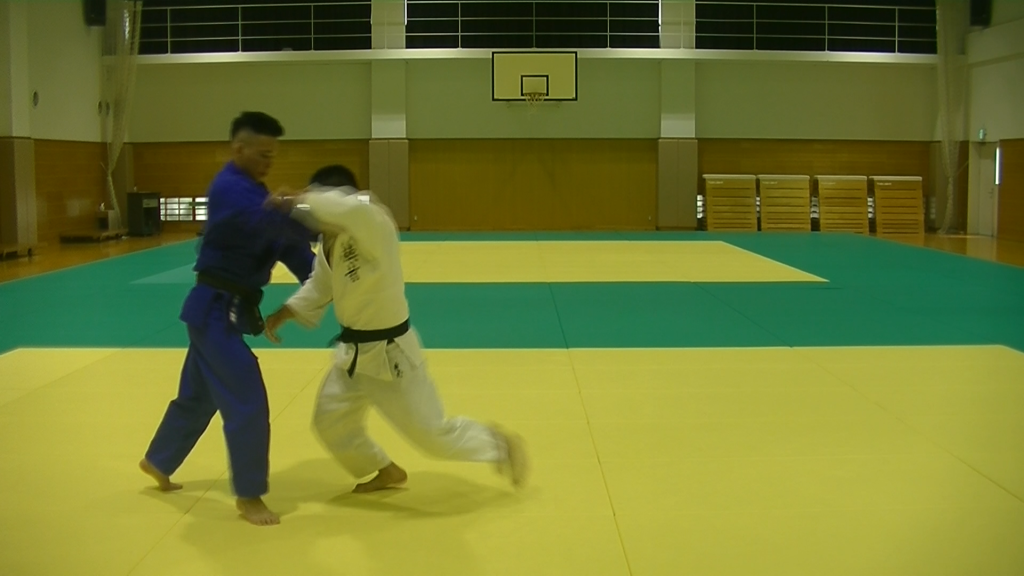
White sinks his body and gets under his opponent and apply Waza.
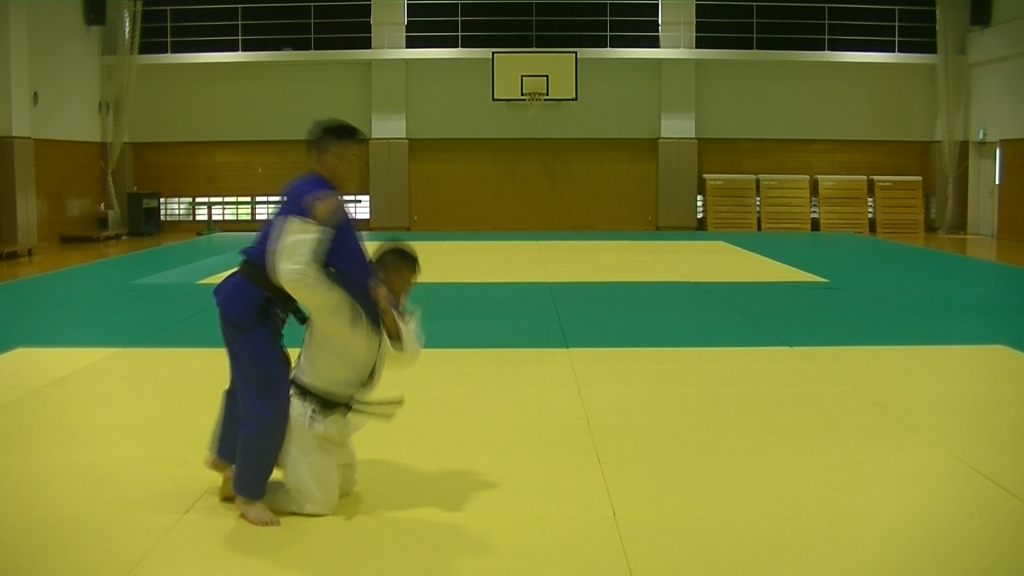
It looked like an easy throw, but the pressure was very well put on Blue, and White applied Waza to take advantage of the Blue’s movement to bring his body back.
Next example. If Blue grabs Oku-eri (back collar) of White and closes the spacing, White is at a disadvantage in that position and still wants to regain his stance,
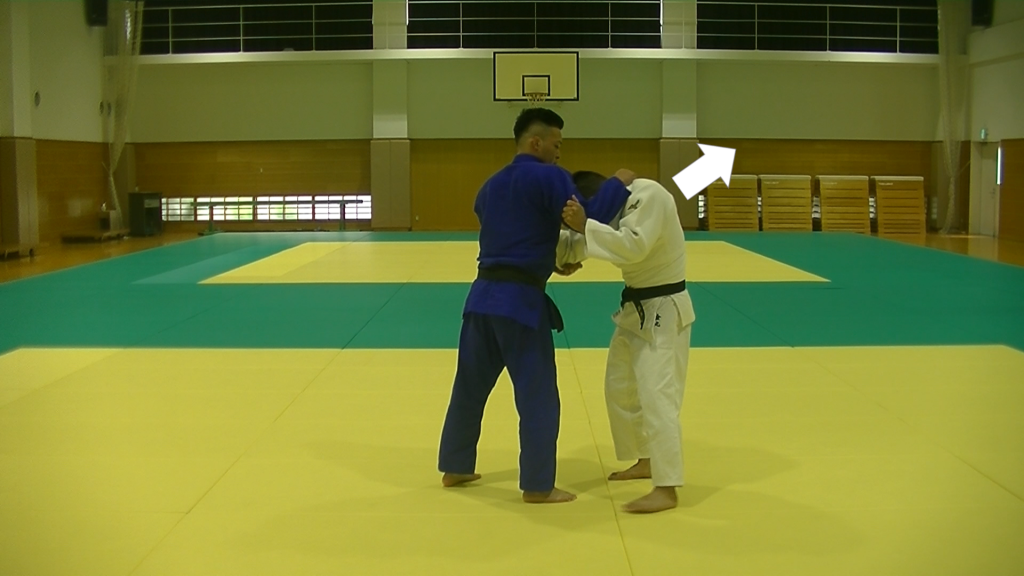
therefore, Blue can take advantage of this movement to apply Waza that will knock White backward, like Osoto-gari.
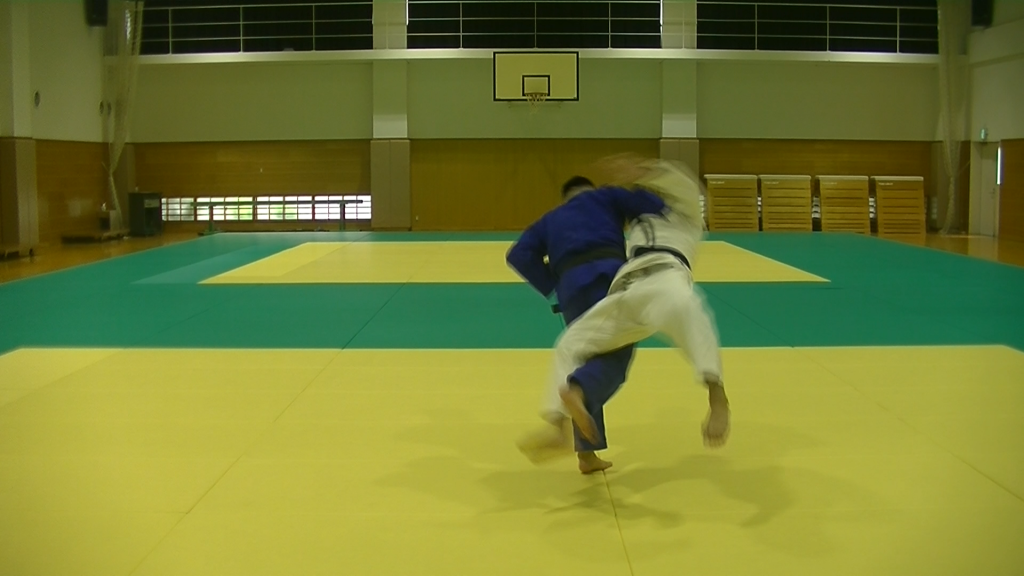
This is another example of using pressure put on the opponent.
Q:Are both called “reactions”, that take advantage of the opponent’s reacting movement?
Yes, they are.
Next, let us assume as a match-up between two Judo-ka who have studied each other well, for example, that Blue knows that White is good at Seoi-nage.
In this case, Blue defends himself by pulling his center of gravity backward in this manner to prevent his body from being brought forward.
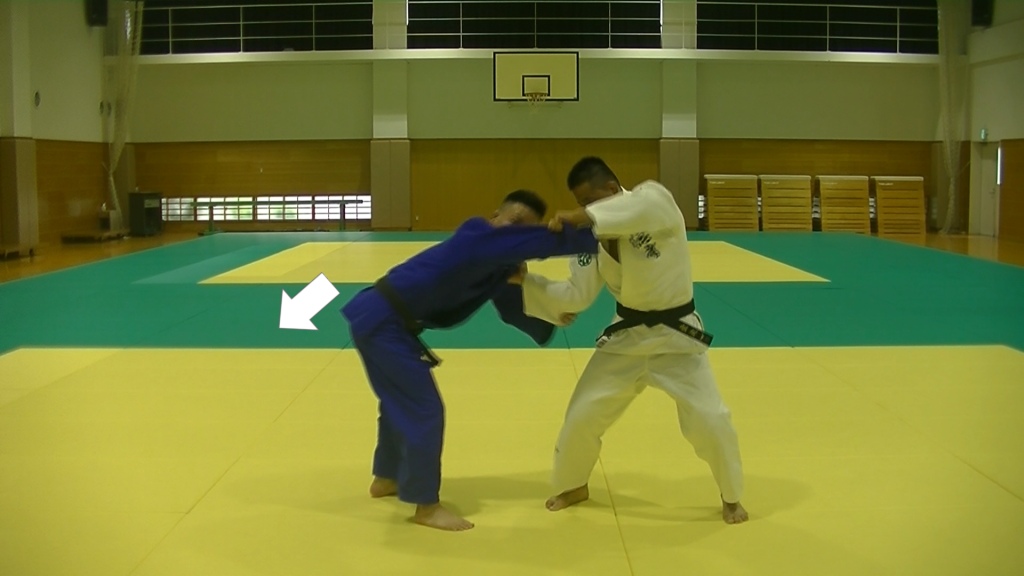
Like this way, Blue defends himself from being brought forward. In this case, it is very difficult to throw with Seoi-nage, however White can apply Kouchi-gari from the same motion.

As you can see, it is very effective to have a pair of contrasting Waza’s like this to counter against the defense of the opponent’s backward center of gravity. (Waza that knocks the opponent’s forward and one of backward.)
Another common Waza we often see is Uchimata. As Blue is a very good at Uchimata, White takes a defensive posture by pulling back at the waist.
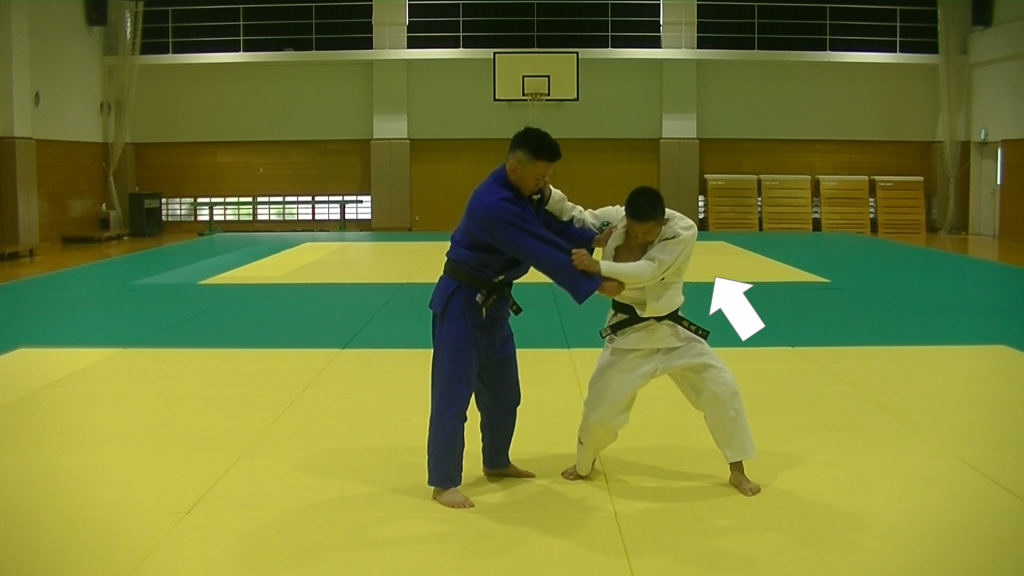
In this case, since White’s weight is still behind him, Blue can apply Tani-otoshi.

Let’s see another example. When White goes to apply Osoto-gari in Ai-yotsu (Symmetrical stance) Blue responds by pulling his right leg back a little, because will be applied as it is.
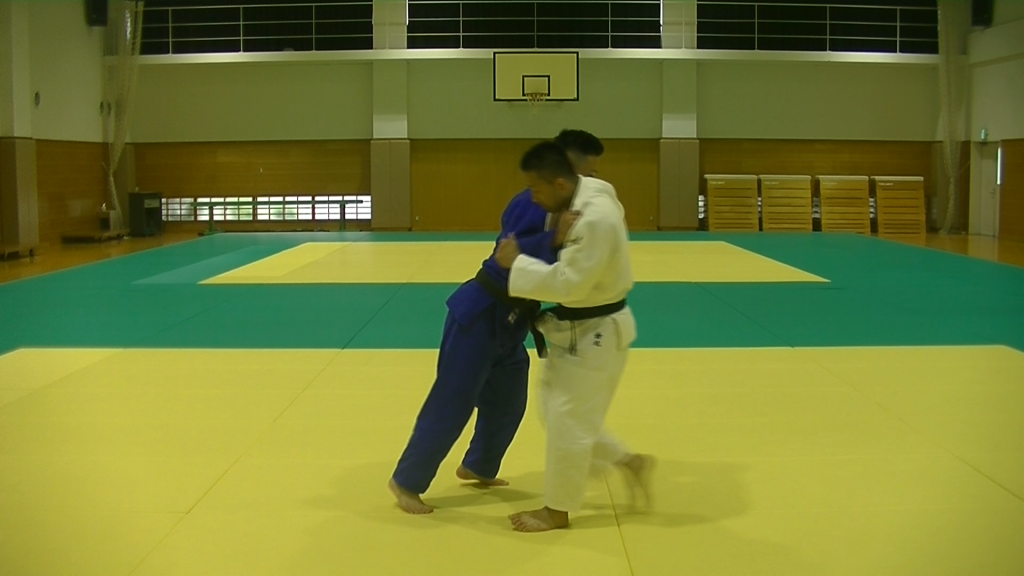
White is too far to apply Osoto-gari in this position, so he can change to applying the Sasae-tsurikomi-ashi from there.
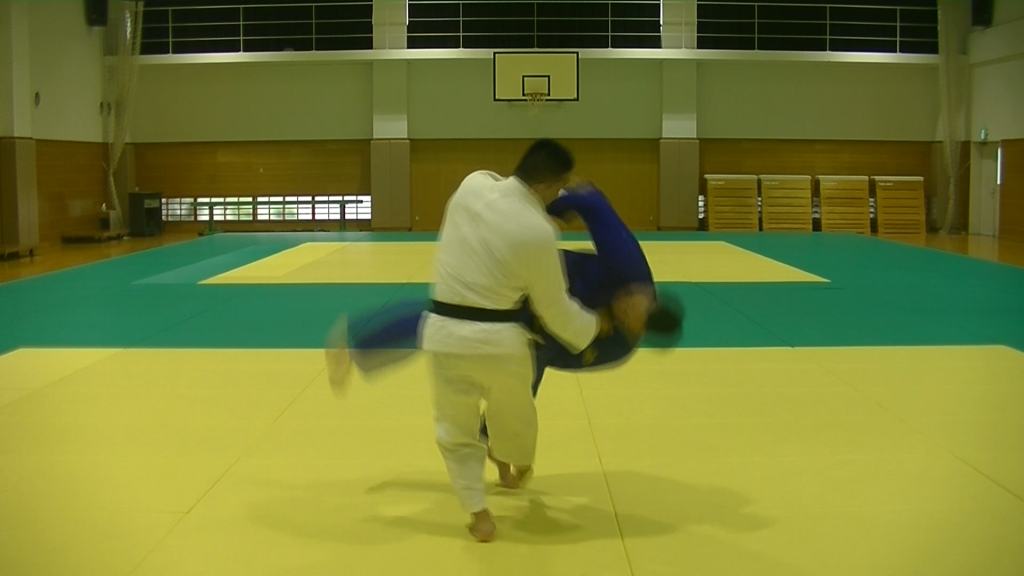
Such kind of combinations are used as “contrasting Waza”.
Then let’s see the use of height differences. Usually, Ippon-seoi nage is applied about this height.
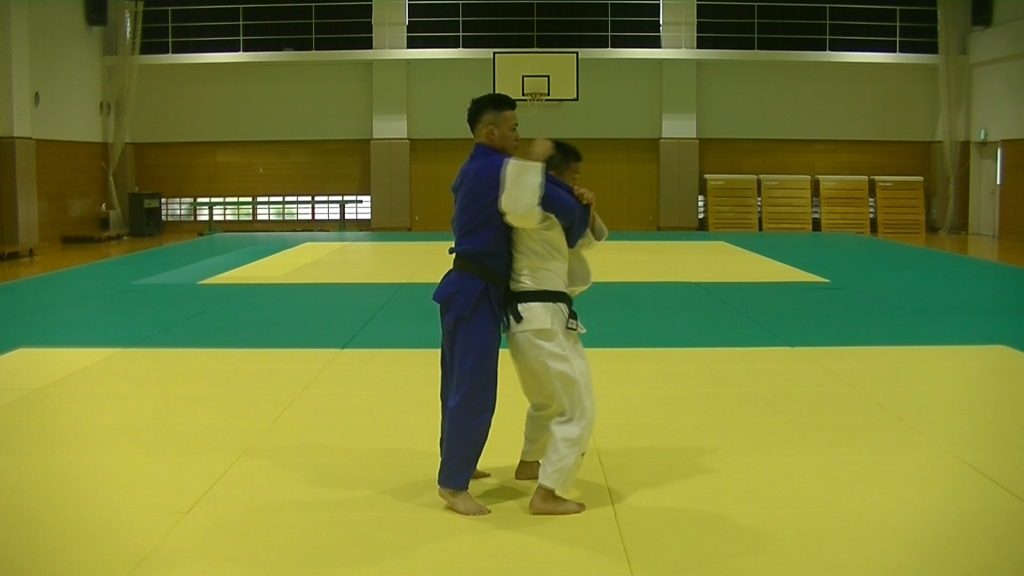
If Blue sences that White is going to apply Ippon-seoi nage, he will defend himself by lowering his center of gravity (or pulling back) by his waist.
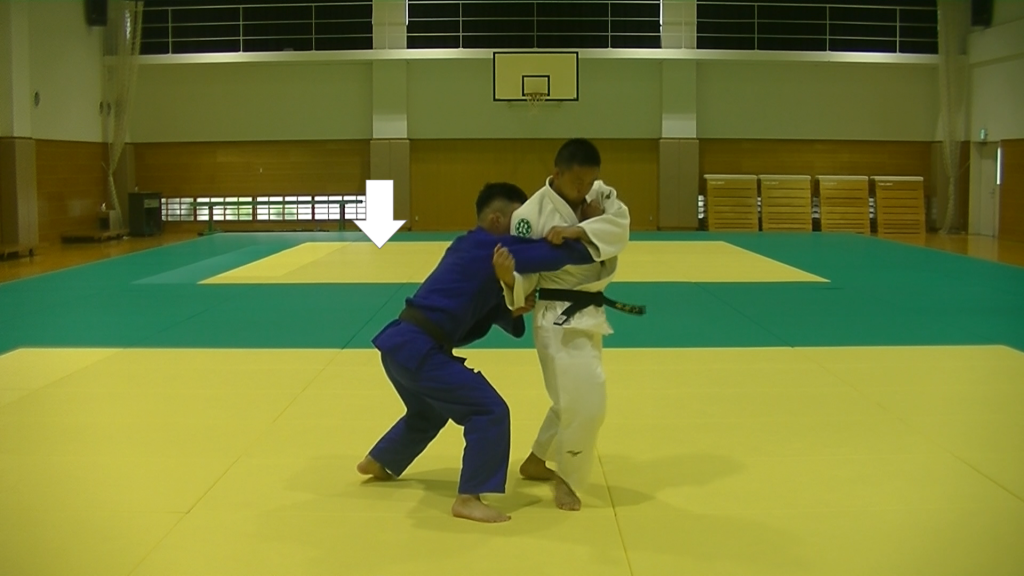
In such a case, White cannot apply Waza at normal height, so he instantly assume a lower position than the opponent and apply Ippon-seoi nage.
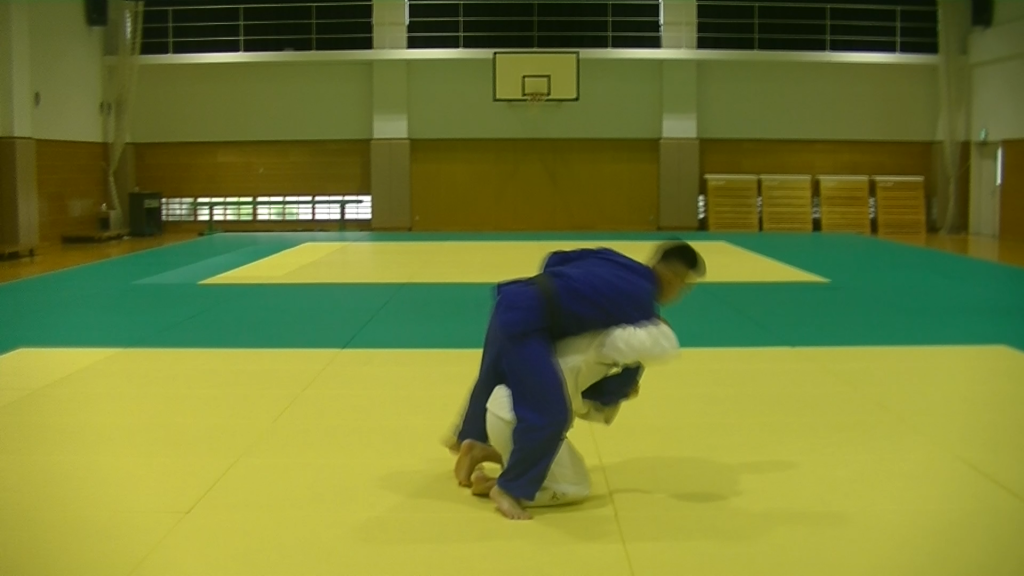
In the case of Judo-ka like the Abe siblings, who are agile and very fast in applying Waza, they are able to immediately apply Waza upon grappling before their opponents can do so. For example, let’s see Sode-tsurikomi-goshi, which is applied upon grappling. As soon as White holds the sleeves, he immediately applies Waza.
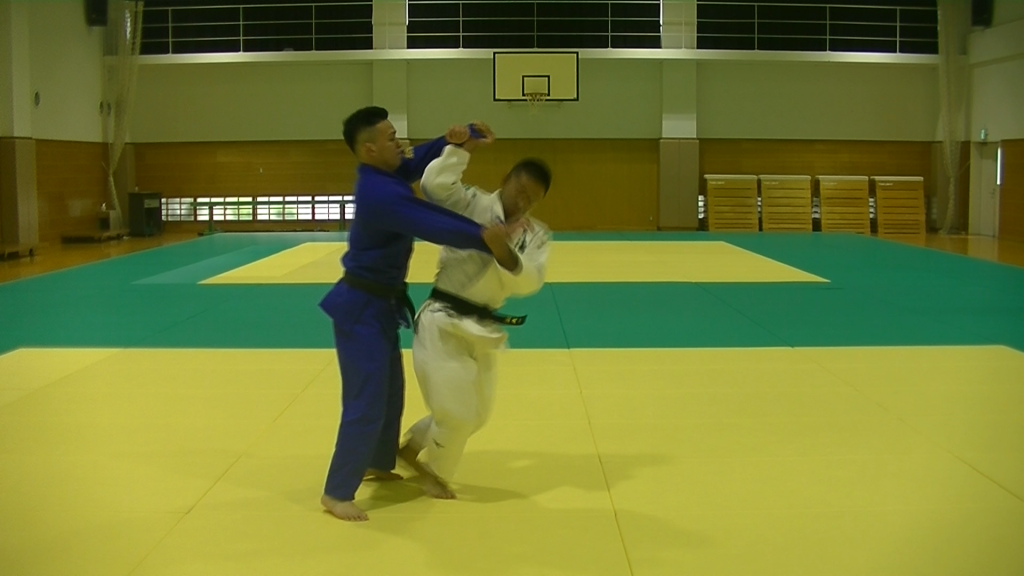
Before the opponent can react in any way, Mr. Abe, for example, will be in time to apply Waza. If Judo-ka has that much overwhelming speed, he/she can do this way of entering Waza. If both Judoka are same high-level and there is no speed difference, they can stop or block, but if there is a big speed difference, he/she can apply Waza all at once.
Q:In the current Waza, White was gripping both Sode (sleeves) of Blue, is it also meant to block the opponent’s movement?
Well, in this case, Blue cannot grip any part of White. Blue is trying to do something about it and is sencing that he is about to get Sode-tsurikomi-goshi, but by that time he has already been applied such Waza. Therefore, the key is how to encourage the opponent’s reaction or how to move the center of gravity.
Let’s look at a more rare situation. This is the Waza we saw earlier, Seoi-nage, and in Kenka-yotsu, with Blue grabbing the Oku-eri and closing the gap between the two.
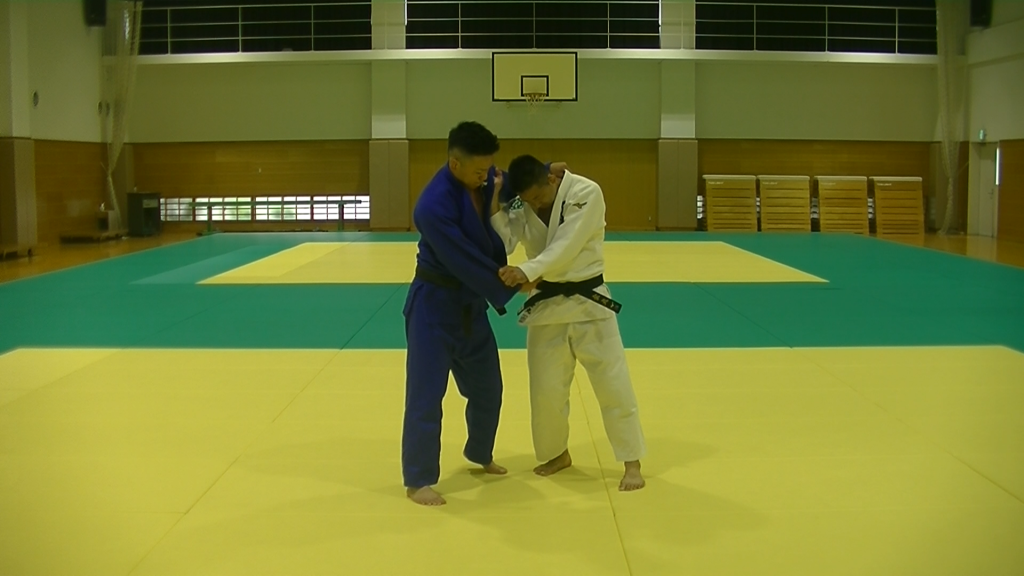
White is in a very tough position, even though he grips Hikite, but even in such a situation, he drills his right elbow in a little gap between them and throws.

Q:Could you please explain the difference between the current Seoi-nage and a regular one?
In the normal Seoi-nage, White folds his elbow and inserted under the opponent’s armpit, but it is difficult to do so in this position. So, if White can make a small gap at his Tsurite, he can drill his Tsurite there in and throw.
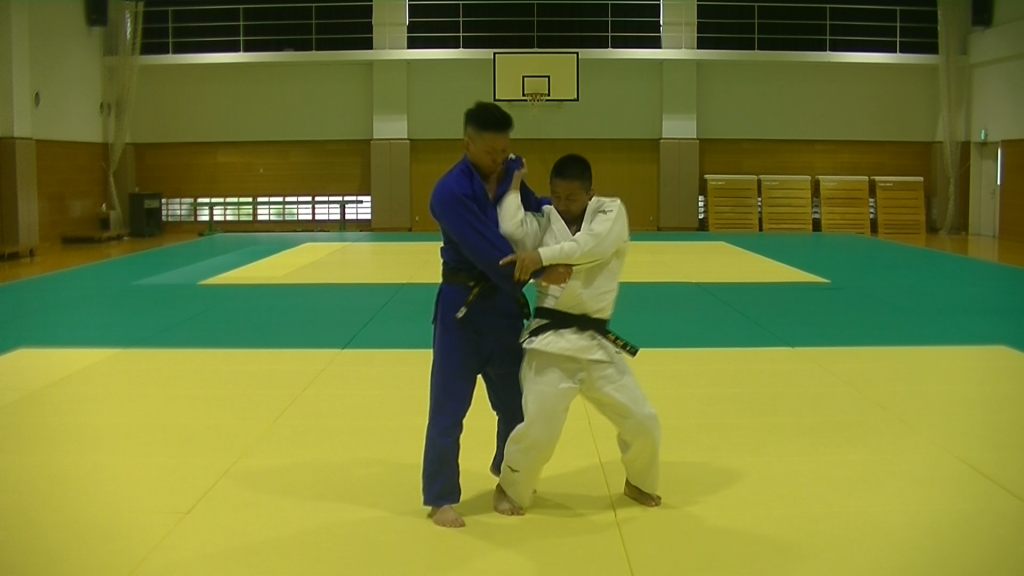
Thus, Judo-ka use spacing, take advantage of their opponent’s reactions, or take advantage of height differences.
The fundamental is still how to move the opponent’s center of gravity. As you can see in Judo matches, Judo is always in motion. It is very difficult to apply Waza’s from a standstill, as they are often blocked by the opponent.
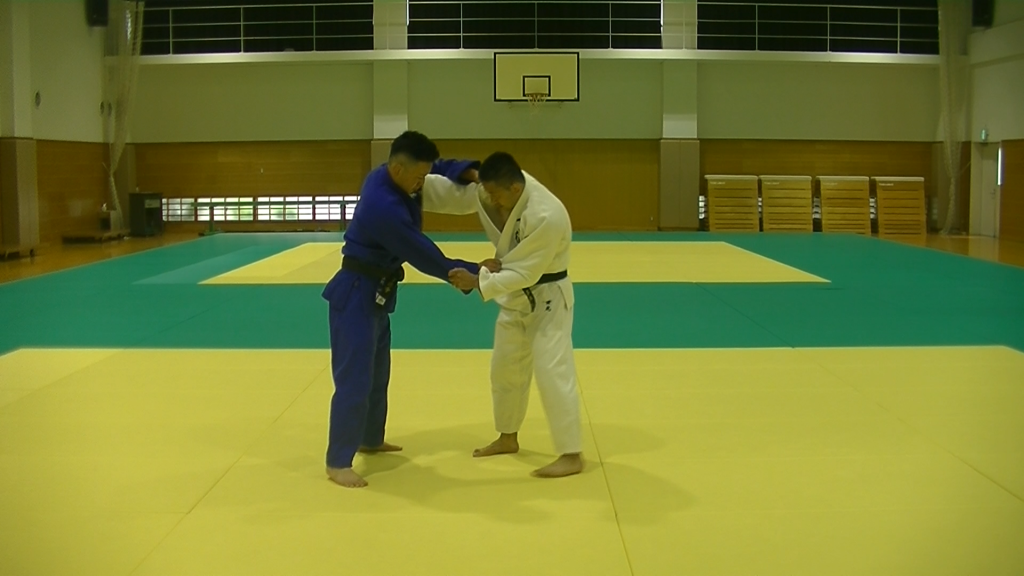
In Judo matches, Judo-ka have to move their opponent even while they are in Kumite Arasoi (gripping fight). When a person moves, the center of gravity is moving. While such movement, it is important to control the center of gravity.
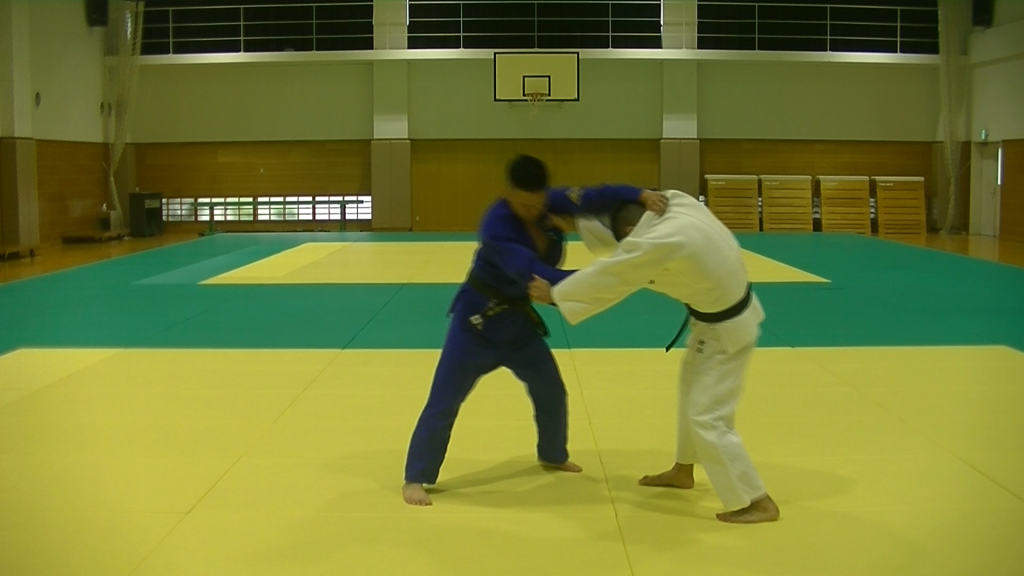
If Blue grabs Oku-eri and pulls White close in, White is usually not able to apply Seoi-nage easily, so White moves on himself to create a desirable spacing as well as using his Tsurite. This is another form of Kumite Arasoi.
Q:So, in addition to use their Tsurite and Hikite, Judo-ka controll the spacing by moving your own body?
Yes. And while Kumite Arasoi including such movement, Judo-ka are searching a chance to apply Waza each other.
Q:If so, their own reaction speed from the moment to think “Now is the chance!” to that to enter to apply Waza is also very important, isn’t it?
Yes. Therefore, if two top-level Judo-ka who know each other well are competing, it is effective to do some new unexpected Waza, because the opponent will not be able to predict to be attacked in such way.
Part 5: How to move the center of gravity?
If Judo-ka (athletes) are tightly grappled against each other, they will stop moving and both center of gravities do not move easily. Once in this position, even if Blue tries to apply Waza (techniques), White knows how to defend himself, so it is very difficult to apply Waza and throw.
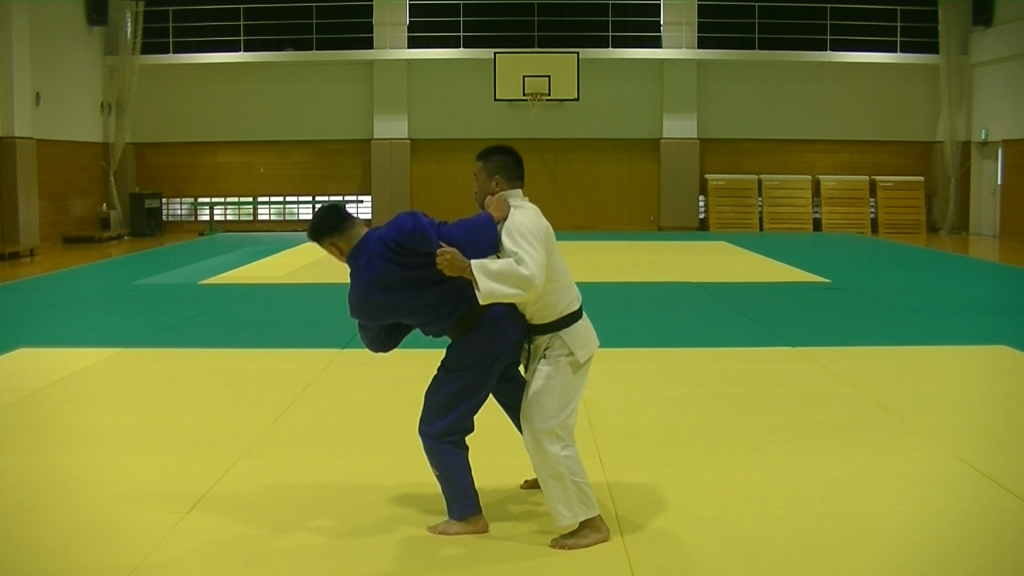
In such situation, Judo-ka cannot directly enter to apply Waza, so it becomes necessary to create the timing and scene for entering Waza. So, for example, White moves his own body while using his Tsurite (Lifting hand) and controls Blue’s center of gravity like this way.

By White’s flapping forward or swinging, Blue loses control of Hikite (Pulling hand) as he is forced to move his stance. As the center of gravity moves like this, there will be an opportunity to apply Waza.

Therefore, in Judo, even when it seems to be grappled each other, they do not remain stationary. In the heavyweight classes, you may even see scenes where Judo-ka catches his/her opponent in, but generally this kind of movement and control of the opponent’s center of gravity is used in conjunction with Kumite Arasoi (gripping fight).
One point worth noting here is the very effective use of the wrists, which is said to be the secret of Japanese Judo’s strength.
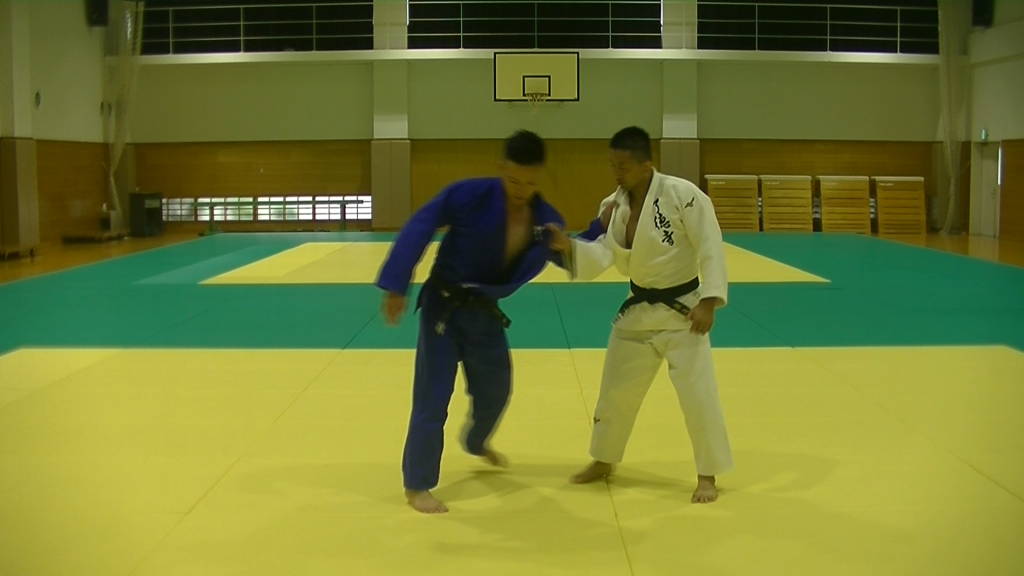
He always keeps moving in this way, using the snap, without locking his wrist and stopping, and he can use the wrist for his attack and also to stop the opponent’s attack.
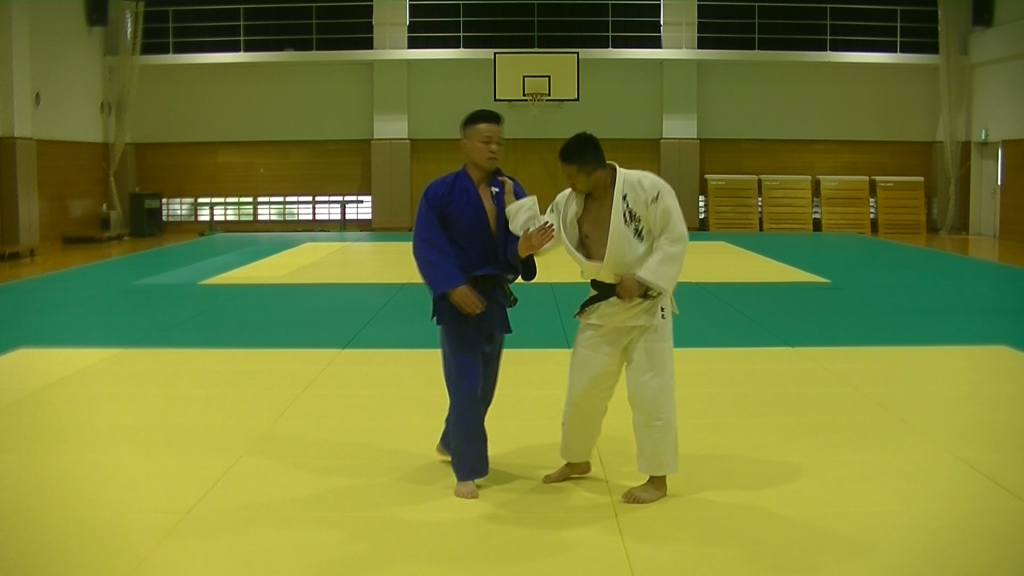
I think this kind of offense and defense is one of the points to enjoy watching Judo as well.
Q:Is it important to control the opponent’s head to move the center of gravity?
Yes. A large head bobbing leads to a big movement of the center of gravity. Let’s see their movements again. Blue can’t help himself in this situation,
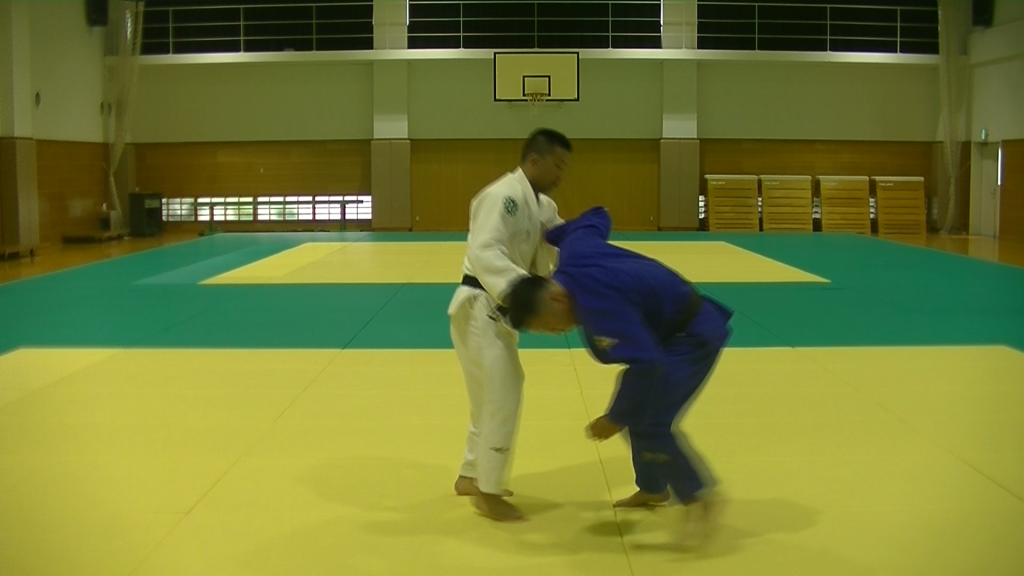
but of course Blue is a skilled Judo-ka, so if we ask him to show you his real moves, now we can see that his head is barely moving though White tries to move it.
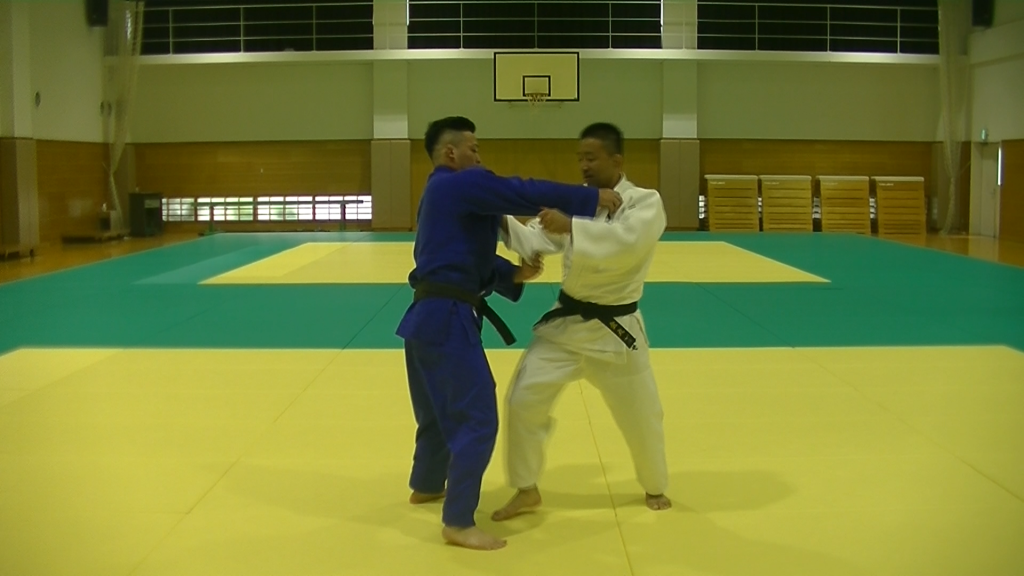
This is the usual form, then the problem is how to change this situation,it is often seen in Osoto-gari, to control the opponent’s head, sometimes Osoto-gari is applied while pushing the opponent’s chin from below. Thus, when White apply Osoto-gari by pushing the Blue’s chin from below, Blue’s head moves backward, so the center of gravity is in his back.
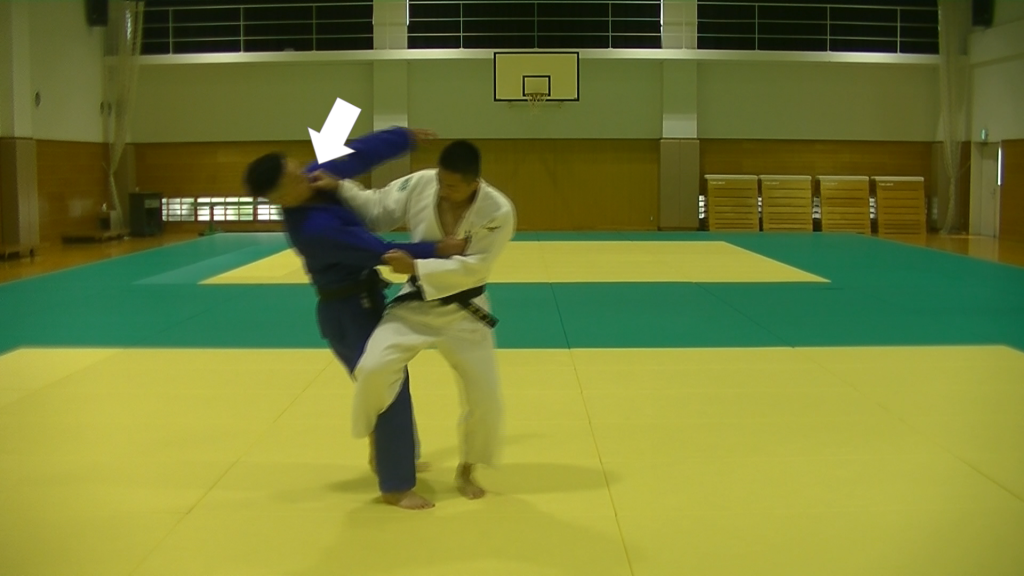
Also, in Osoto-gari with grabbing Oku-eri (back collar), the inside of White’s elbow is placed against the Blue’s neck.
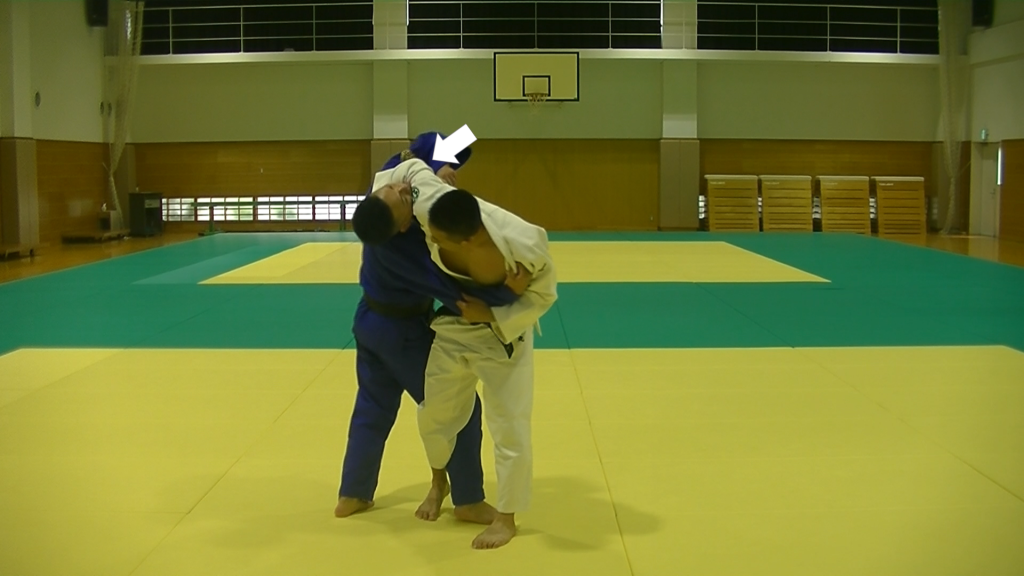
This is often seen in heavyweights classes, and it also raises the opponent’s chin and moves his center of gravity backward.
Or even in Kouchi-gari, which White is good at, if he applies it with pushing on Blue’s chin,
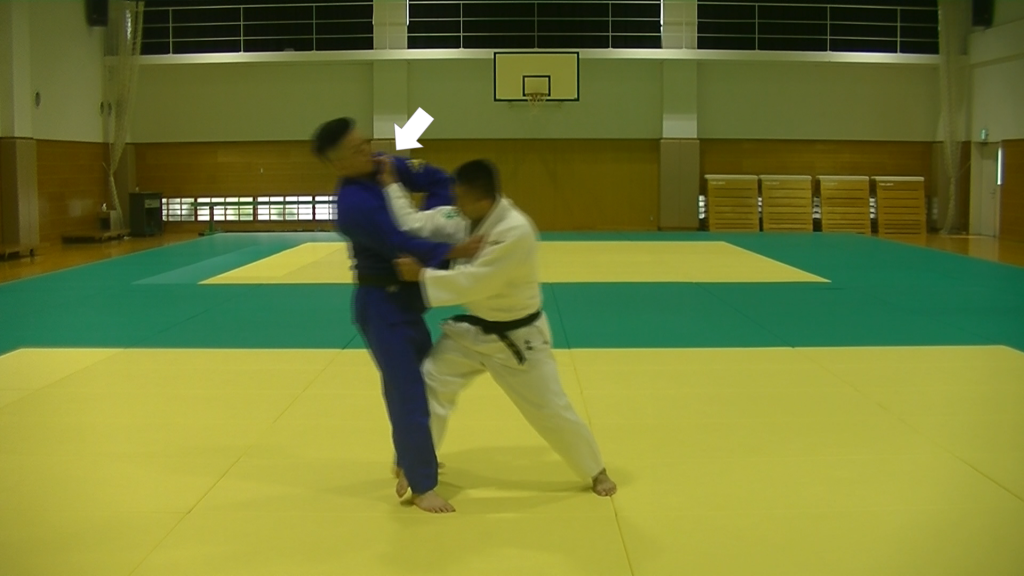
the center of gravity is Blue’s back because his head moves backward even though Blue tries to bear it. Therefore, in Judo, it is important to control the head. One way to do this is to grab Oku-eri and closing the spacing, and controlling the head to take advantage of the opponent’s reaction.Now Blue is not in a good position because his head is down.
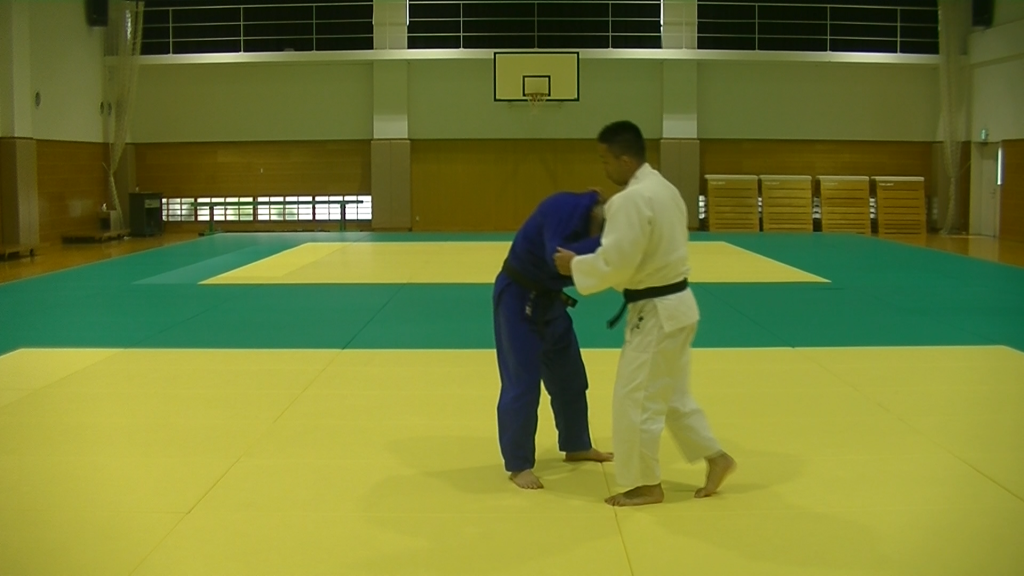
Creating this kind of position is important.
Q:Is there other way to move the opponent’s center of gravity?
This is one method to move the opponent with a circular motion, not just back and forth.
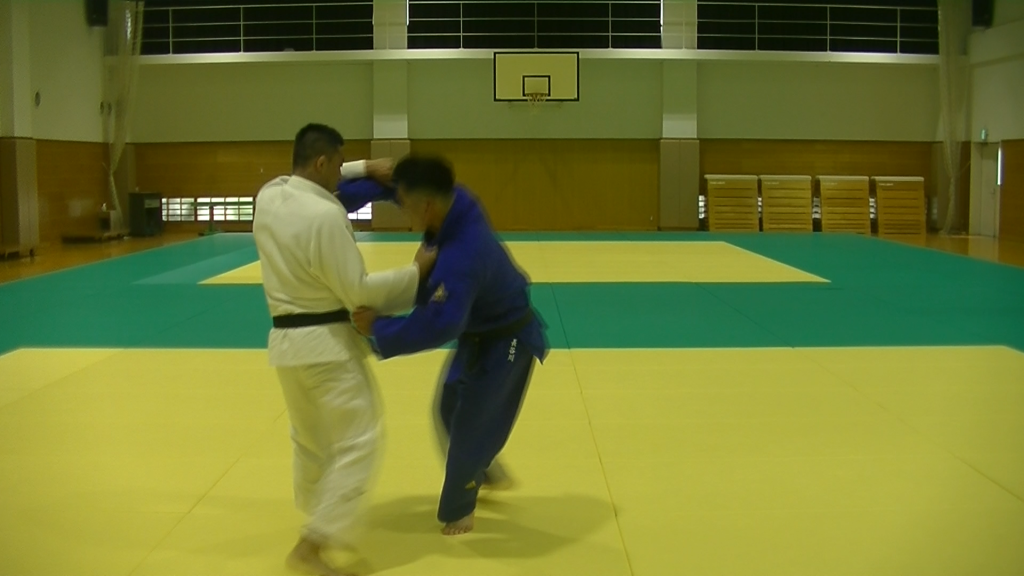
It is a method of applying Waza using the rotation of his own body.
Applying force to the front and back is also common, especially among foreign Judo-ka. They push each other, and apply force very strongly to each other. But in this case, the weaker Judo-ka is often pushed straight down. In this case, if White is pushed and goes out of the ring, he will be given an “Jo-gai Shido”, and if he doesn’t like it and pushes back, he will be applied Waza taking advantage of his reaction.
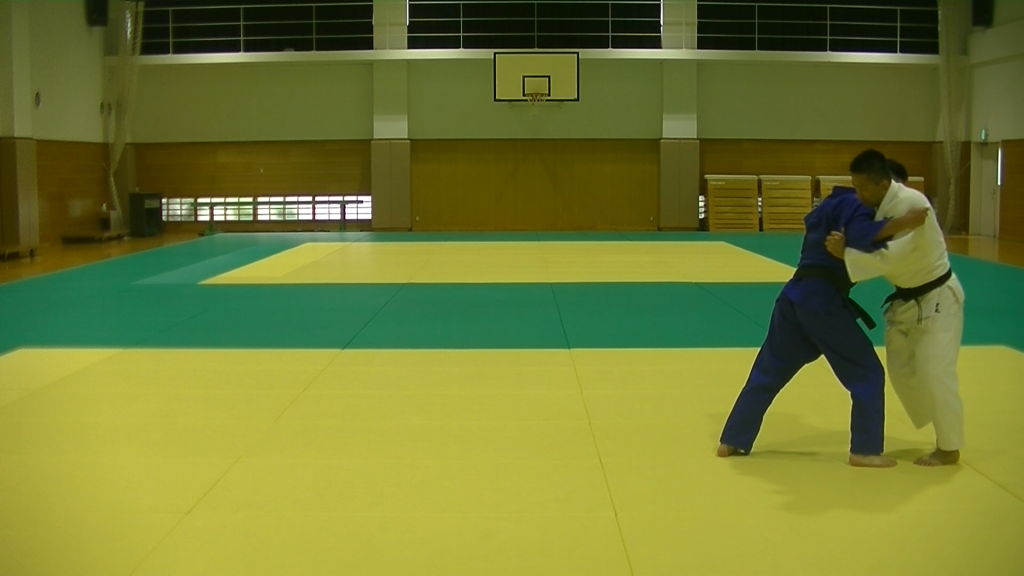
When White pushes you back, Blue can apply Waza like this.
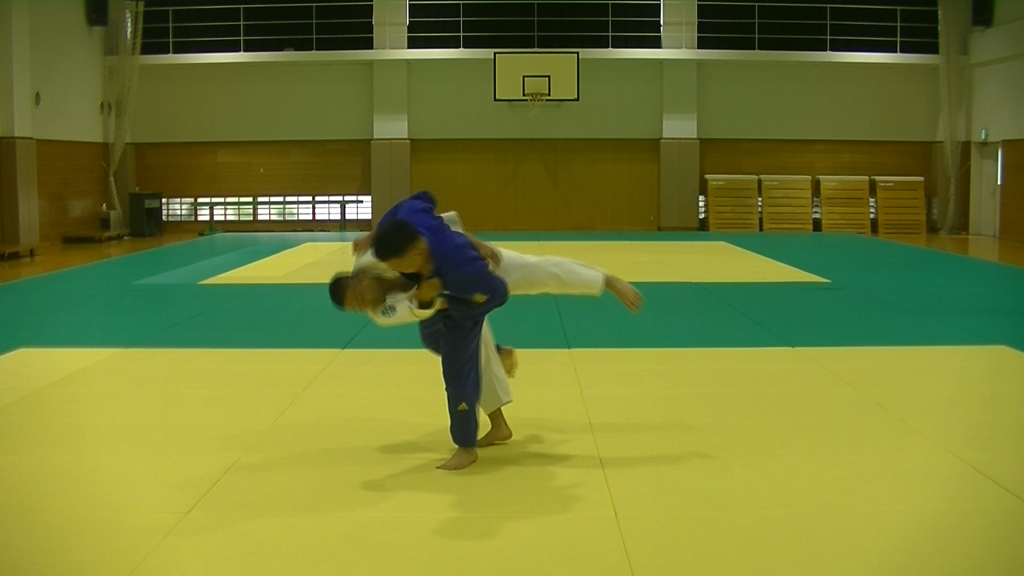
When White pushes you back, Blue can apply Waza like this. Therefore, it is effective to avoid such a situation by avoiding in left or right the opponent who pushes in a straight line, or by avoiding in a circular motion the opponent.
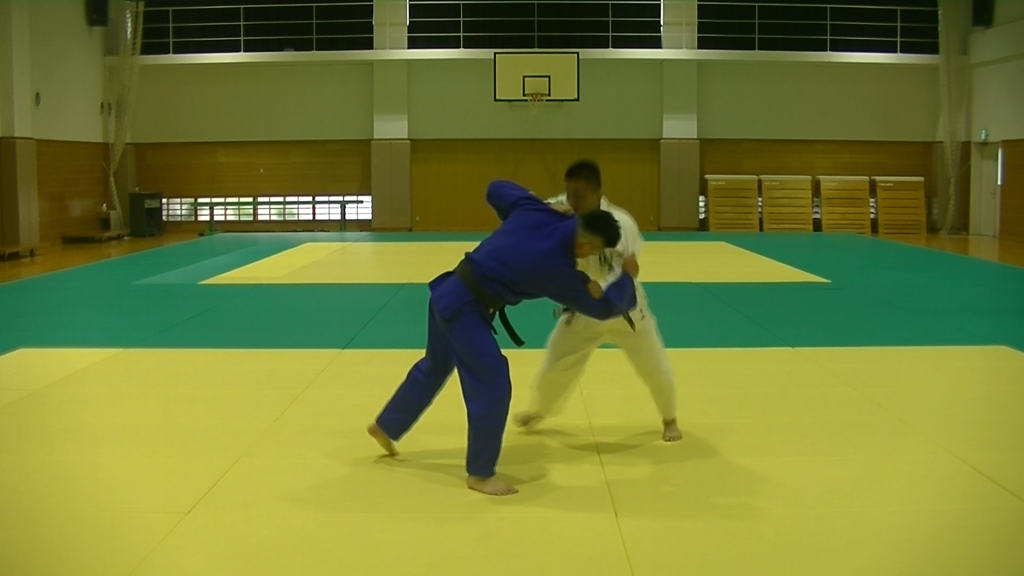
Q:Does it mean changing the vector instead of taking the opponent’s force straight on?
Yes. Sometimes coaches give instructions such as “don’t back down” or “push aside” during the matches.
Q:Does Judo-ka respond by such way when the opponent’s pressure is strong?
If Judo-ka take the pressure straight on, it becomes a power-to-power game, so to avoid this, they uses their hands, wrists, or their own bodywork to shift the opponent and shift the vector of the opponent’s force, as I mentioned earlier.
appendix:
Actually, Mr. YAMADA said like following when he was talking about how to controll the center of gravity.” Both of two Judo-ka showing their techniques and Waza are well skilled Judo-ka, so they do not lose their stances very much.
However, if they were facing a non-Judo-ka, even a slight movement of their wrist would cause the opponent to lose his/her stances. By seeing this, you can feel the superiority of Judo-ka.
So, I actually tried it out myself.
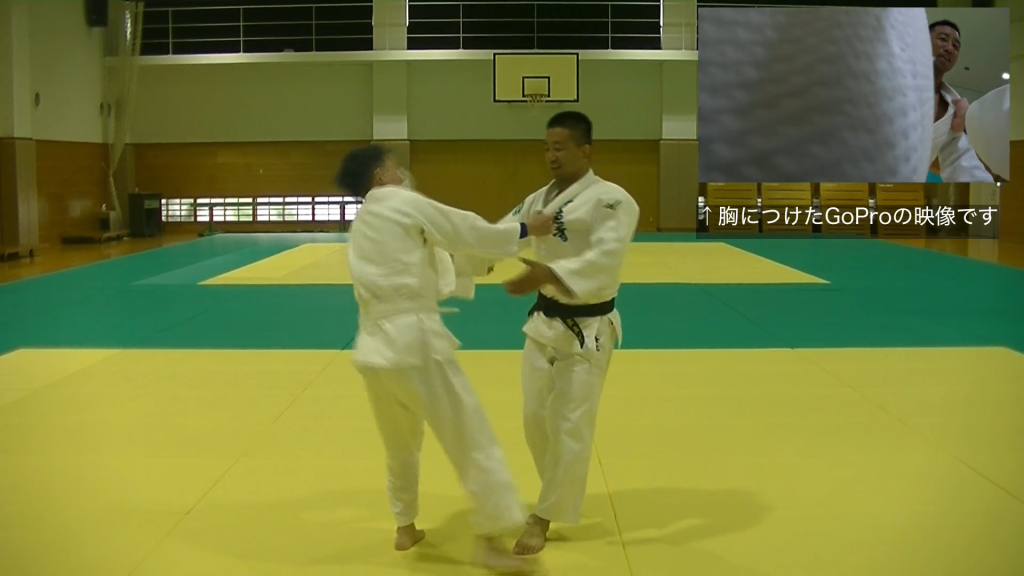
Amazing!
Share this content:
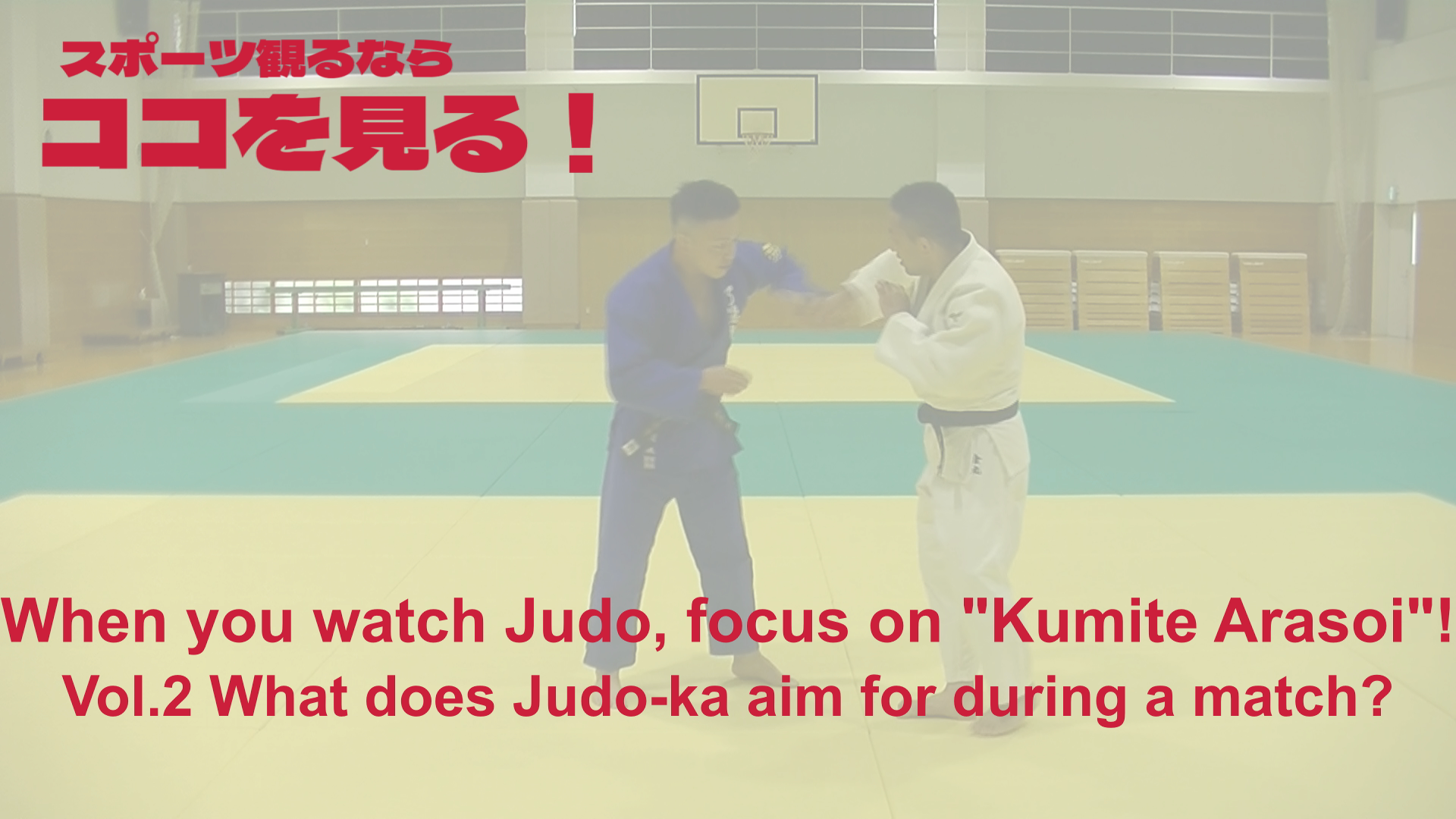
コメントを残す